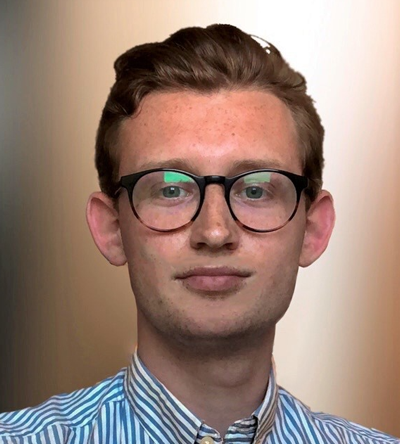Towards an interactive crash simulation
Bram van de Weg is a PhD student in the department Applied Mechanics & Data Analysis. (Co)Promotors are prof.dr.ing. B. Rosic from the faculty Engineering Technology and dr.ing. L. Greve from Volkswagen AG.
 To comply with ever-increasing requirements in vehicle safety, light weight design and energy footprint, the automotive industry is currently undergoing a paradigm change where computationally expensive finite element simulations are substituted by more efficient surrogate modeling approaches. An initial step towards surrogate modeling of finite element simulations is the identification of the nonlinear large-deformation finite element model, the parameters of interest in the finite element model and the parameterization accordingly. To strive towards the goal of computationally efficient optimizations in crash-related problems, the current state of research is first evaluated using data generalized by parametrized finite element models and on the basis of a currently available, well known and proven long short-term memory surrogate architecture. To subsequently overcome the problems of generalization and handling of data noise a novel optimization methodology is developed that provides a flexible and self-configuring surrogate model. By means of benchmark examples and crash-related load cases this methodology is proven robust, while simultaneously allowing the quantification of (relative) uncertainty over the imposed domains. A strongly related continuation of this approach is then developed to further improve the description of the present domains (i.e. time, stochastic and spatial) using the principle of domain separation and corresponding suitable surrogate frameworks. This approach implicitly entails a low-rank approximation of the approximated problem to elevate the computational efficiency of the surrogate model. It is found that with the in this work developed novel optimization methodologies in the various surrogate frameworks a robust, flexible and self-configuring surrogate model is provided that allows for an efficient and interactive evaluation of structural optimization problems.
To comply with ever-increasing requirements in vehicle safety, light weight design and energy footprint, the automotive industry is currently undergoing a paradigm change where computationally expensive finite element simulations are substituted by more efficient surrogate modeling approaches. An initial step towards surrogate modeling of finite element simulations is the identification of the nonlinear large-deformation finite element model, the parameters of interest in the finite element model and the parameterization accordingly. To strive towards the goal of computationally efficient optimizations in crash-related problems, the current state of research is first evaluated using data generalized by parametrized finite element models and on the basis of a currently available, well known and proven long short-term memory surrogate architecture. To subsequently overcome the problems of generalization and handling of data noise a novel optimization methodology is developed that provides a flexible and self-configuring surrogate model. By means of benchmark examples and crash-related load cases this methodology is proven robust, while simultaneously allowing the quantification of (relative) uncertainty over the imposed domains. A strongly related continuation of this approach is then developed to further improve the description of the present domains (i.e. time, stochastic and spatial) using the principle of domain separation and corresponding suitable surrogate frameworks. This approach implicitly entails a low-rank approximation of the approximated problem to elevate the computational efficiency of the surrogate model. It is found that with the in this work developed novel optimization methodologies in the various surrogate frameworks a robust, flexible and self-configuring surrogate model is provided that allows for an efficient and interactive evaluation of structural optimization problems.





